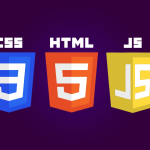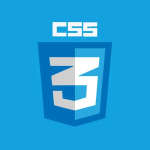In today’s digital world, mobile apps are at the heart of innovation. From booking a cab to ordering food, apps have changed how people interact with technology. If you’ve ever wondered how to develop a mobile app but didn’t know where to start, this guide will walk you through every step from idea generation to app launch using modern tools, best practices, and proven development methods.
Table of Contents
Understanding the Basics of Mobile App Development
Mobile app development is the process of creating software applications that run on smartphones and tablets. These apps can be designed for different platforms such as Android, iOS, or cross-platform frameworks that work on both. Each platform has its own development tools, programming languages, and design principles.
Before you start coding, it’s important to understand your goal. Are you building a business app, an educational tool, a game, or something for social impact? Having a clear purpose helps shape the entire development process.
You can learn more about mobile development basics on Android Developers and Apple Developer.
Step 1: Define Your App Idea and Purpose
Every great mobile app begins with a great idea. Ask yourself these questions:
- What problem does my app solve?
- Who is my target audience?
- What unique value will my app provide compared to existing ones?
Once you’ve defined your idea, write a short description and create a value proposition. This document will guide your design and development decisions later.
Step 2: Conduct Market Research
Before investing time and money, perform detailed market research to validate your idea. Analyze existing apps in your niche, study user reviews, and identify what users like or dislike. Use platforms like Google Play Store or Apple App Store to check competition.
You can also use tools like Google Trends and App Annie to understand market demand and user behavior.
Step 3: Choose the Right Development Approach
There are three main approaches to building mobile apps:
Native App Development
Native apps are built specifically for one platform (Android or iOS) using their respective languages and SDKsd Kotlin/Java for Android and Swift/Objective-C for iOS. These apps offer high performance and deep hardware integration.
Cross-Platform Development
Cross-platform frameworks allow you to write one codebase that works on multiple platforms. Popular frameworks include Flutter, React Native, and Xamarin. They save time and cost while maintaining near-native performance.
Hybrid App Development
Hybrid apps use web technologies like HTML, CSS, and JavaScript but run inside a native shell. They are easier to build but may not perform as well as native apps for complex tasks.
Step 4: Design the User Interface (UI) and User Experience (UX)
Design plays a critical role in your app’s success. A well-designed app attracts users and keeps them engaged. Focus on intuitive navigation, clean layouts, and appealing visuals.
Tools like Figma, Adobe XD, and Sketch allow you to create interactive prototypes and test your app design before development begins. Follow official design guidelines like Material Design for Android and Human Interface Guidelines for iOS to maintain consistency and usability.
Step 5: Start the Development Process
Once your designs are finalized, you can start coding. Set up your development environment Android Studio for Android apps, Xcode for iOS, or Visual Studio Code for cross-platform apps.
Follow a structured development workflow:
- Frontend Development: Focus on UI elements and user interactions.
- Backend Development: Build databases, APIs, and server-side logic.
- Integration: Connect the frontend and backend to ensure data flow.
If you’re using Flutter, Dart will be your programming language; for React Native, you’ll use JavaScript or TypeScript.
Step 6: Test Your App Thoroughly
Testing ensures your app performs well on different devices and conditions. Common testing types include:
- Unit Testing: Checks individual functions or components.
- Integration Testing: Ensures modules work together properly.
- User Acceptance Testing (UAT): Verifies app usability from a real user’s perspective.
You can use testing frameworks like Appium, Espresso, or XCTest depending on your platform.
Step 7: Deploy and Publish Your App
Once testing is complete, your app is ready to go live.
- For Android, submit your app to the Google Play Store.
- For iOS, submit it to the Apple App Store after passing Apple’s review process.
Prepare attractive app descriptions, screenshots, and promotional videos to enhance visibility. Optimizing your app listing with keywords known as App Store Optimization (ASO) improves your app’s ranking and downloads.
Step 8: Maintain and Update Your App
Launching an app is just the beginning. Regular updates are necessary to fix bugs, add new features, and keep up with platform changes. Collect user feedback through in-app surveys and monitor performance using analytics tools like Firebase Analytics or Mixpanel.
Tips for a Successful Mobile App
- Keep your app simple and focused on solving one core problem.
- Optimize for performance and battery life.
- Test across multiple devices and OS versions.
- Secure user data with encryption and proper authentication.
- Promote your app through social media, blogs, and influencer marketing.
Conclusion
Developing a mobile app might seem challenging, but with the right approach and tools, it becomes an exciting journey of creativity and problem-solving. Whether you are a beginner or an experienced developer, focusing on planning, design, testing, and maintenance ensures your app’s long-term success.
Also Check Blockchain – Power of Fast Technology of Crypto – 2025











1 thought on “How to Develop a Mobile App – Comprehensive Guide – 2025”